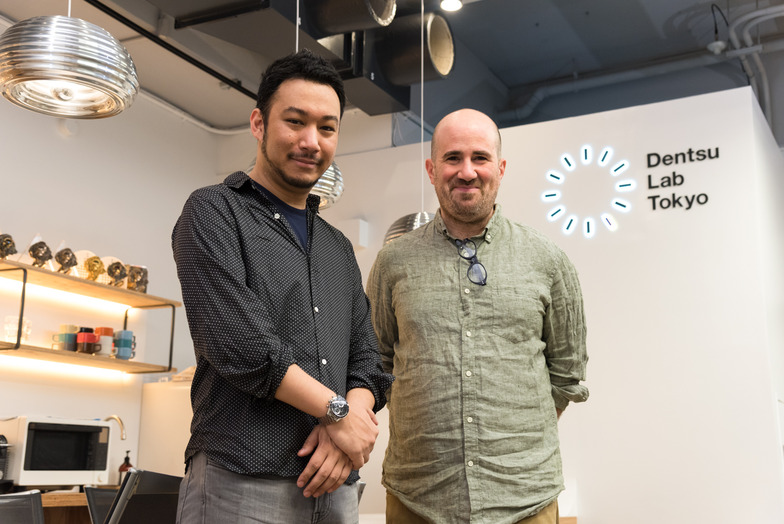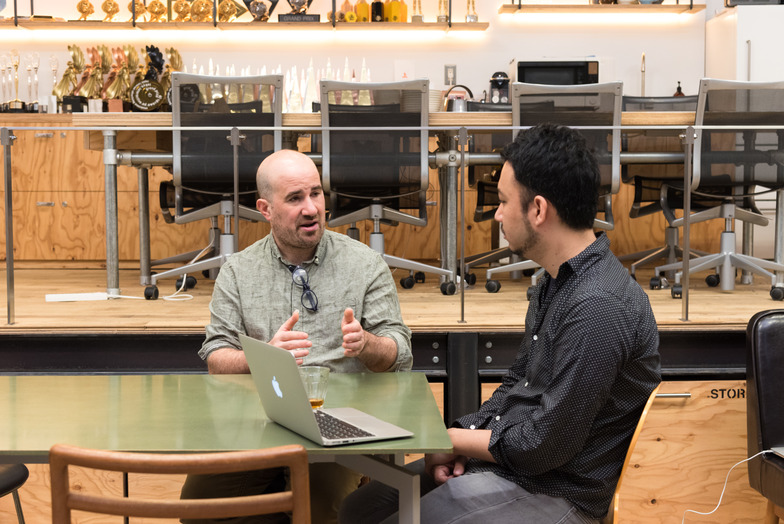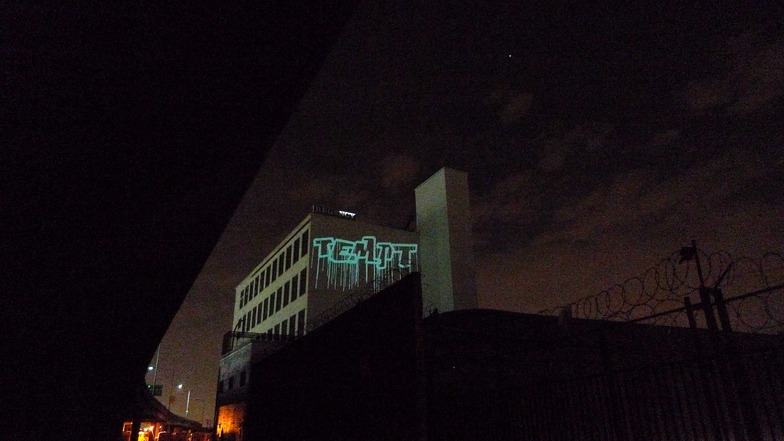
EyeWriter Project
Tony Quan, a legendary graffiti artist from Los Angeles, was diagnosed with ALS (※2) in 2003. Zack developed a tracking device for him that allowed him to create graffiti art using only his eye movements. Graffiti art Tony actually drew with his eye movements was projected onto building walls, enabling Tony's creative expression once again.
(※2) Amyotrophic lateral sclerosis (ALS) is a neurological disease where muscles in the limbs, throat, tongue, and those necessary for breathing gradually atrophy. The brain's commands to move the limbs fail to transmit, leading to muscle weakness and atrophy. Meanwhile, bodily sensations, vision, hearing, and organ functions remain fully intact.
Kida: These works seem to pursue not just creating something visually new, but exploring what creative possibilities exist through software.
Zack: To be honest, I have reservations about the "creative" part of "creative coding." Because the moment you add "creative," it implies that coding itself isn't creative. Whether there's a visual element or not, the act of using code to create something new is fundamentally the same.
Kida: I think openFrameworks has made the activity of writing code and expressing ideas more commonplace. Could you tell us about openFrameworks?
Zack: Sure. To get a bit technical, openFrameworks is a toolkit built with C++, likely the most widely used general-purpose programming language, serving as a framework for creating art and experimental works. We made it open source so artists worldwide who want to express themselves through code can use it.
A School for Poetic Coding
Kida: Zack, you also run a computer school in New York called the "School for Poetic Computation" (literally, "a school for learning to use computers poetically"), which focuses on expression through code. Could you tell us about that?
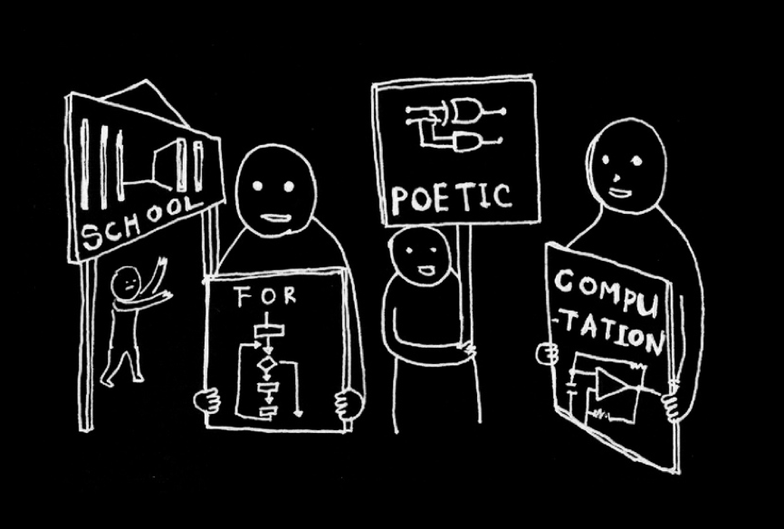
School for Poetic Computation
A school founded in 2013. Students learn code, electronics, and design in an interdisciplinary way through projects. They recruit students each semester, and students come from all over the world.
Zach: The School for Poetic Computation has been around for three years now. Let me tell you about how it started. I was originally teaching at Parsons School of Design, but I was deeply dissatisfied with the American university system. Teaching itself was pure joy, but I grew weary of the politics within the university. Another source of frustration was the skyrocketing cost of American university tuition. Parsons was no exception. Watching tuition rise made me wonder: Was there something I could do myself? I discovered others sharing this vision, began thinking about what kind of curriculum I would create, and from there, the school's name emerged.
Kida: The name "Poetic" for the school is incredibly striking.
Zack: Yes, we thought about that a lot together. We used the term "Poetic Computation" as another way to describe creative coding. We could certainly have called what we aimed for "creative coding." But, as I touched on earlier, I felt very uneasy about how the word "creative" was being used.
Kida: So the moment you added "creative," there was a risk of creating a dichotomy—labeling things as creative or not creative.
Zack: Exactly. As we continued discussing with colleagues, the name "Poetic Computation" came up. Upon reflection, linking the act of coding with the act of writing poetry struck me as a really good idea. Writing poetry involves arranging appropriate words within a certain structure, which shares similarities with programming. Poetry is also an elevated form of expression, transcending the language we normally speak. We wanted to view the act of programming in a similar light.
Some people hear the name "School of Poetic Computation" and can't immediately picture what it entails. But that's perfectly fine. Because that very question is where the conversation begins. Poetry and code? What could that mean? We want our students to ask precisely those kinds of questions.
The "School of Poetic Computation" is a 10-week curriculum structured around three pillars: ① Computation, ② Electronics, and ③ Theory, within which various topics are explored. In American universities, the semester system (dividing the academic year into two terms) is standard, with each term typically lasting 15 weeks. We deliberately set this program at 10 weeks to accommodate international students. Since "School of Poetic Computation" is not a university, we cannot issue student visas to international participants. The 10-week duration allows students to complete the course within the timeframe permitted by a tourist visa for staying in the U.S.
Honestly, I think 10 weeks is just the right length. It gives students time to experiment with different things during the term, and it's also the perfect duration for students to bond and build camaraderie. Staying up late, drinking wine with classmates, debating, staying curious, and learning with passion—that's my ideal. I created the school I wished I could have attended when I was a student.
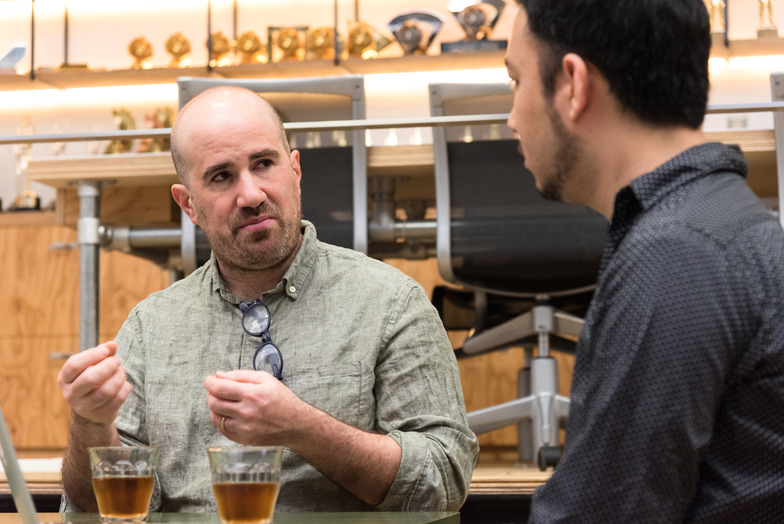
Kida: Do you think the concepts of "poetry," "code," and "expression" could be applied to industries like advertising, where I work?
Zack: I believe it can be applied to any world, not just advertising. Specifically for the advertising industry, I think it's crucial to create an environment that allows for creative experimentation. Many clients seek things they can understand. However, when attempting art or creative work, it often involves a series of things that are hard to explain or difficult to grasp.
When creating new forms of expression, we must avoid simply following what's already been done and instead seek out what no one has ever done before. Striking the right balance here is incredibly difficult. Explaining something no one has ever done to a client is truly challenging. But if you can say to a client, "Would you like to aim for a new form of expression together?", then I believe that's when truly poetic expressions, things no one has ever seen before, can emerge.
Kida: I learned a lot today. Thank you very much!
[After the Interview]
Creating an Environment for New Expression
Zach Lieberman is both an artist and an educator. What stood out during our interview with him was the importance of collaborative creation with others. As introduced at the beginning, none of his works are created solely by him. For example, "iQ Font" involves a professional racing driver, and "EyeWriter Project" incorporates graffiti artists – these collaborations are essential to the works' existence. The environment at "School for Poetic Computation" is similar. For him, creating work isn't something done in isolation; it's about sharing ideas with others and building upon them, expanding them continuously.
He often speaks of "Do it with others" (DIWO). For instance, in the world of digital fabrication—using 3D printers or doing electronics—while it's "Do it yourself," collaboration with others (With Others) is actually essential. Through online and workshop interactions with people sharing common interests—in other words, "doing it with others"—close-knit communities are nurtured, ideas spread, and new creations emerge. I also think the open-source nature of the creative coding environment openFrameworks is significant. Much of the source code for his works is freely available, allowing anyone to examine it. It's precisely this attitude that inspires other artists and fosters a community that collaboratively cultivates and creates works and various experiments.
Full version of this article here





